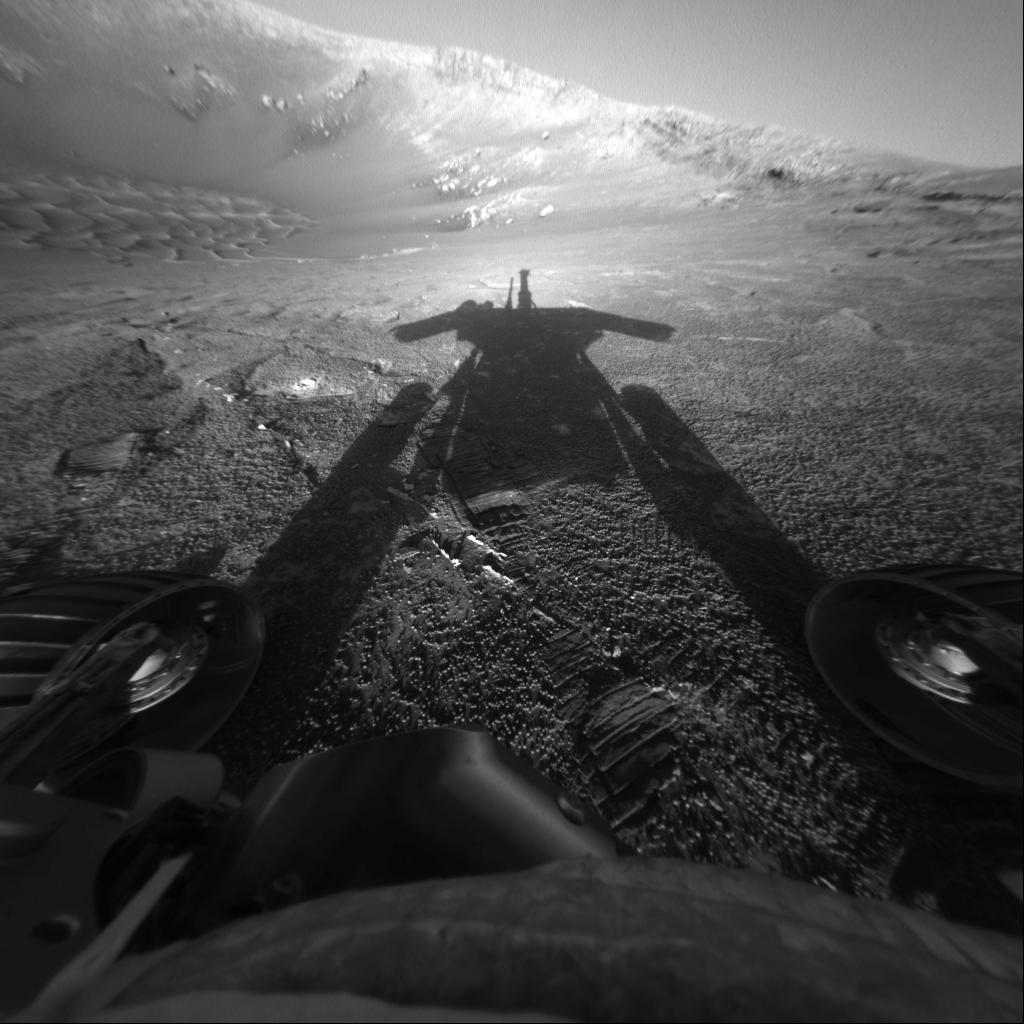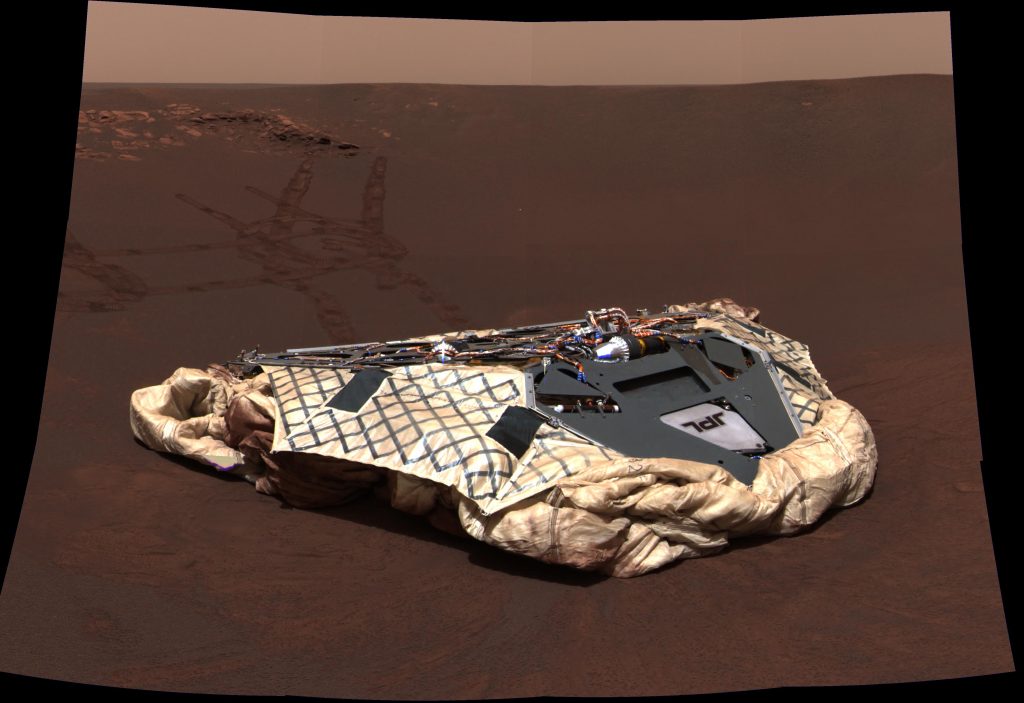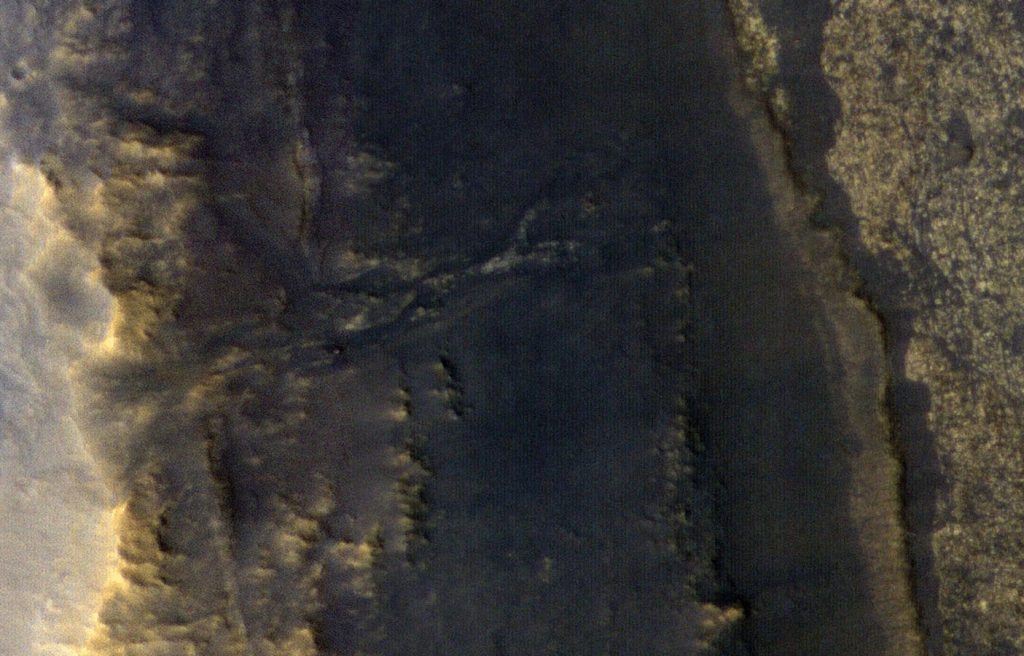Remembering Opportunity, the little rover that could

On Wednesday, February 13, 2019, NASA officially announced the “death” of Opportunity (2003-2018), a rover sent to Mars by NASA in 2003 for a 90-day mission that turned into a staggering fifteen years.
Opportunity landed on Mars on January 25, 2004, three weeks after its companion rover, Spirit, touched down on the other side of the Red Planet. Opportunity and Spirit were part of NASA’s Mars Exploration Program, and, together, the pair were tasked with helping scientists better understand the planet’s geology and the history of water on the planet.

After the success of the Sojourner rover in 1997, which demonstrated the feasibility of a wheeled vehicle on Mars, Spirit and Opportunity were the first truly mobile geology laboratories on Mars. Both Opportunity and Spirit far exceeded their expected lifetime—just 90 days. Spirit lasted until 2010 and gave scientists amazing data about an ancient hydrothermal system at its landing site, called Gusev Crater. Opportunity showed that its landing area, Meridiani Planum, was the site of a shallow salty sea. Both rovers gave us a picture of a warmer, wetter Mars billions of years in the past.
Periodically,
Despite many challenging obstacles, Opportunity went on to

Insights From Opportunity
In its unprecedented fifteen-year mission, Opportunity made significant contributions to our understanding of the Red Planet. Some highlights include:
- —Returning over 217,000 images of Mars surface, including 15 360-degree color panoramas, that have helped scientists piece together more about the planet’s geology
- —Finding evidence of a history of water at its landing site
- —Finding evidence of ancient hydrothermal vents that would have existed beneath a warm, shallow lake
- —Encountering evidence that suggests Mars may have been warmer and more hospitable in its past, including veins of the mineral gypsum at Endeavour crater
Opportunity, More Than a Machine
The loss of Opportunity has struck a chord in many who have followed the rover over the past fifteen years. Admirers took to social media to express their condolences for the “little rover that could” and say their own farewells.
#ThanksOppy for 15 years of space exploration! You’ve left some big tracks to fill in that rocky Martian surface. *Pours one out*
— Adler Planetarium (@AdlerPlanet) February 13, 2019
(FYI: This is a Mars rover replica in our Solar System exhibit, but we think it’s a fitting spot to pay tribute!) pic.twitter.com/FgAmdOMNuM
Opportunity was far more successful than anybody could have ever imagined. I could not be more proud of the @NASA family and the incredible work of the Opportunity team. https://t.co/pQnxUb5g6T pic.twitter.com/FCfducYmyy
— Jim Bridenstine (@JimBridenstine) February 13, 2019
thank you #opportunity pic.twitter.com/YnXUNd783x
— Liz Climo (@elclimo) February 14, 2019
RIP and thank you for your service, Opportunity.🖖 https://t.co/99Dldab61z
— George Takei (@GeorgeTakei) February 14, 2019
On behalf of so many young scientists who got their start watching these amazing robots: Goodbye, Spirit,
Future of Mars Exploration
While we say our final goodbye to Opportunity, exploration of Mars is far from over. Several NASA satellites currently orbit Mars, including MAVEN, Mars Odyssey, and the Mars Reconnaissance Orbiter, which, together, have given us a better picture of the surface and atmosphere of Mars. The Curiosity rover, which landed on Mars in 2012, is currently exploring Mount Sharp in Gale Crater, and NASA’s InSight lander is just 78 sols (at time of publication) into its two-year mission to explore Mars’ interior structure. (To learn more, visit NASA’s Mars Exploration Program online.)
In addition to U.S. spacecraft, there are several from other countries at Mars now, including the European Space Agency’s (ESA) Mars Express satellite and ExoMars Trace Gas Orbiter, and India’s Mars Orbiter Mission. In 2020, NASA will launch the Mars 2020 rover to seek signs of past life on Mars, and the European Space Agency (ESA) will launch the ExoMars rover—newly named for Rosalind Franklin, a British scientist who contributed to the discovery of the double helix structure of DNA.
Header Photo: Image (and self-portrait) taken by Opportunity on






